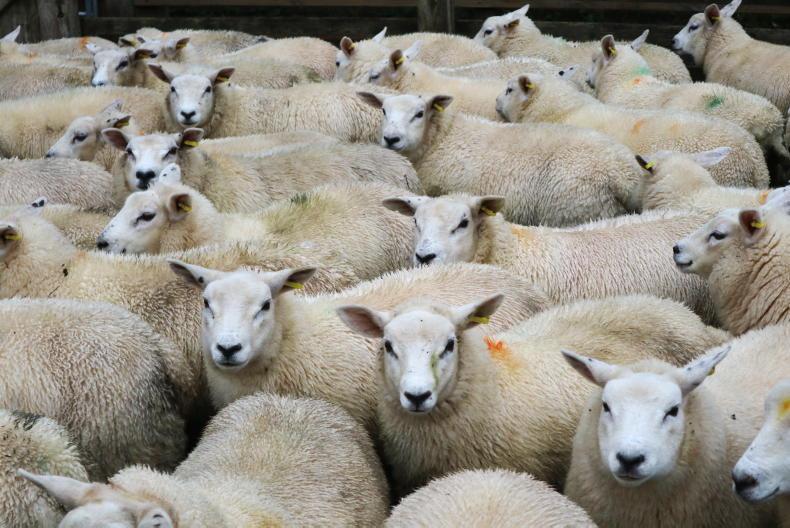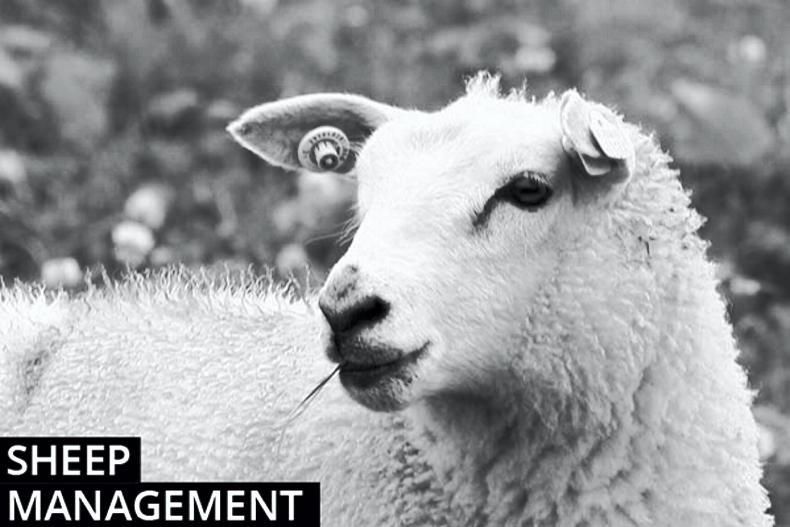A common complaint with ewes coming up to lambing is that of vaginal prolapse. This is where ewes prolapse their vaginal passage or neck of the womb. They can vary in size and the bigger the prolapse the more serious the condition. They can be extremely uncomfortable to the ewe because the bladder can often be involved, meaning she can’t urinate.
While this is a common occurrence due to a number of factors, an incidence greater than 2% to 3% in the flock is worth investigating. It can be a serious problem as, even when corrected early through stitching, it can pose problems around lambing. These ewes must be carefully monitored as they can often lose lambs and lambing can be difficult to spot.
Potential causes
While there are numerous theories as to why this happens, there is no definite cause attributed to the condition. In my opinion, there are a number of potential reasons for it happening.
It is worth noting that, of all the ruminants, ewes have the least space towards the end of lambing between rumen and gravid uterus.
Over-fat ewes close to lambing can prolapse due to increased abdominal pressure.Carrying numerous big lambs can cause increased pressure leading to prolapses.High-fibre bulky diets and large rumens in big lambs can also cause increased pressure in the abdomen.Limited exercise in housed ewes and also lame ewes standing for prolonged periods have been linked to prolapse.Finally, an interesting cause might be hypocalcaemia or low calcium in the ewe if the other factors are not contributing. This is a cause I am increasingly interested in because low calcium will affect muscle tone, which could lead to prolapses.The longer these prolapses are from lambing, the poorer the chances are of recovery, simply because the tissue can get damaged and infected. This will ultimately lead to abortion and maybe death in the affected ewes.
Calcium injections in Australia
What I will do with these cases is give an epidural and replace the prolapses and then stitch the outer labia with a purse string suture. This is a special suture which is placed through two small incisions that does not enter the inside of the vaginal wall.
It was recently pointed out to me that in Australia these cases will often receive a calcium injection, which is interesting.
I am not a fan of plastic retainers or harnesses as they tend to cause a lot of irritation and lead to more problems at lambing. This is only my own personal experience and some farmers are very happy using them. These ewes should receive pain relief and a covering antibiotic injection as standard.
I always recommend that ewes that have been stitched are monitored carefully for signs of lambing. So if bagging up with milk, uneasiness, straining or any vaginal discharge, remove the purse string suture.
They should then be handled with a clean glove because they often won’t open up properly or the cervix won’t dilate fully.
Anionic salts
Like with every problem on farm, if 2% or greater incidence of prolapses occurs it is worth looking for potential factors that are contributing to it.
If the other reasons above have been ruled out, it may be worth considering low calcium. There are reports of anionic salts being fed to ewes in these circumstances to help reduce prolapse levels. I have no experience of using these, but I am planning to do more research and also use anionic salts if the correct circumstances arise.
It is hugely important if there are issues with prolapses in your flock that you talk to your own vet about the best course of action.
A common complaint with ewes coming up to lambing is that of vaginal prolapse. This is where ewes prolapse their vaginal passage or neck of the womb. They can vary in size and the bigger the prolapse the more serious the condition. They can be extremely uncomfortable to the ewe because the bladder can often be involved, meaning she can’t urinate.
While this is a common occurrence due to a number of factors, an incidence greater than 2% to 3% in the flock is worth investigating. It can be a serious problem as, even when corrected early through stitching, it can pose problems around lambing. These ewes must be carefully monitored as they can often lose lambs and lambing can be difficult to spot.
Potential causes
While there are numerous theories as to why this happens, there is no definite cause attributed to the condition. In my opinion, there are a number of potential reasons for it happening.
It is worth noting that, of all the ruminants, ewes have the least space towards the end of lambing between rumen and gravid uterus.
Over-fat ewes close to lambing can prolapse due to increased abdominal pressure.Carrying numerous big lambs can cause increased pressure leading to prolapses.High-fibre bulky diets and large rumens in big lambs can also cause increased pressure in the abdomen.Limited exercise in housed ewes and also lame ewes standing for prolonged periods have been linked to prolapse.Finally, an interesting cause might be hypocalcaemia or low calcium in the ewe if the other factors are not contributing. This is a cause I am increasingly interested in because low calcium will affect muscle tone, which could lead to prolapses.The longer these prolapses are from lambing, the poorer the chances are of recovery, simply because the tissue can get damaged and infected. This will ultimately lead to abortion and maybe death in the affected ewes.
Calcium injections in Australia
What I will do with these cases is give an epidural and replace the prolapses and then stitch the outer labia with a purse string suture. This is a special suture which is placed through two small incisions that does not enter the inside of the vaginal wall.
It was recently pointed out to me that in Australia these cases will often receive a calcium injection, which is interesting.
I am not a fan of plastic retainers or harnesses as they tend to cause a lot of irritation and lead to more problems at lambing. This is only my own personal experience and some farmers are very happy using them. These ewes should receive pain relief and a covering antibiotic injection as standard.
I always recommend that ewes that have been stitched are monitored carefully for signs of lambing. So if bagging up with milk, uneasiness, straining or any vaginal discharge, remove the purse string suture.
They should then be handled with a clean glove because they often won’t open up properly or the cervix won’t dilate fully.
Anionic salts
Like with every problem on farm, if 2% or greater incidence of prolapses occurs it is worth looking for potential factors that are contributing to it.
If the other reasons above have been ruled out, it may be worth considering low calcium. There are reports of anionic salts being fed to ewes in these circumstances to help reduce prolapse levels. I have no experience of using these, but I am planning to do more research and also use anionic salts if the correct circumstances arise.
It is hugely important if there are issues with prolapses in your flock that you talk to your own vet about the best course of action.










SHARING OPTIONS